Submitted:
24 January 2024
Posted:
25 January 2024
You are already at the latest version
Abstract
Keywords:
1. Introduction
1.1. Brief background on railway bridges and importance of structural health monitoring
- Instrumentation: Set of sensors and data acquisition systems that collect the physical structural parameters to be monitored and analyzed.
- Monitoring: Remote data transmission and web publication.
- Analysis: Set of techniques to convert the data into characteristic variables or parameters to understand the structural behavior and implement systems to evaluate and detect structural damage.
- Management: Decision-making aid for action and maintenance that involves making this real time information available to the right people at the right time and within a realistic geometrical contextualization.
1.2. Related research summary
1.3. A digital twin for SHM in railway bridges
- Simulation: SHM + IoT + BIM
- Learning: AI
- Management: DS (Provides decision support)
2. System Architecture and Implementation
2.1. High-level overview
2.1.1. Physical components: accelerometers installed on bridge and local gateway
- The typology and materials used, as well as the constructive uncertainties.
- The failure modes to be considered, ELS (Serviceability Limit States) or ELU (Ultimate Limit States).
- The locations or construction elements to be monitored (critical sections, deck, piles, bearings, abutments, etc.) and the stresses to which they are exposed.
- The environment and other variables affecting durability and integrity, as well as aging.
2.1.2. Digital components: on-premises and cloud system
- Filtering outliers in the vibration frequencies that fall outside expected ranges
- Extracting the top 3 principal vibration peaks for each bridge crossing event
- Clustering the data using k-means [25] to group similar vibration patterns
- Labelling the clusters to create a supervised training dataset
2.2. Technical details on key components
- Sensors: Wireless accelerometers installed on the bridge to measure vibrations. They stream data via WiFi to an on-site gateway.
- 4G Gateway: Collects and transmits sensor data from the bridge location to the central system. Provides local WiFi connectivity.
- MQTT Broker: Message queuing protocol used for efficient sensor data transmission.
- On-Premises Network (A): Middleware hosted on-site for real-time data ingestion and processing. Stores data in time series database and runs analytics like FFT.
- Cloud Network (B): Cloud services for scalable storage, batch processing, and machine learning. Batch data is ingested to the cloud storage data lake and processed in Databricks for ML model training. It includes MLflow, which enables machine learning model management workflows. MLflow is used to track, version, and deploy machine learning models into production in a serverless scalable way.
- Digital Twin Application (C): Consumes real-time sensor data along with bridge geometry model for visualization and alerts. Includes dashboards, notifications, and a digital twin BIM viewer.
2.2.1. MEMS Accelerometers
2.2.2. On-premises system
- Signal Processing Algorithms: Signal processing is a crucial aspect of our study, as it allows us to extract valuable insights from the raw sensor data collected from the railway bridge. In this study, we used a combination of filtering, and noise reduction to process the high-frequency sensor data in real-time.
- Fast Fourier Transform (FFT) Analysis: Following the filtering and noise reduction, the sensor data was then subjected to FFT analysis. The FFT is a signal processing algorithm that transforms a signal from its original time domain to a representation in the frequency domain. This transformation makes it easier to analyze the frequency components of the signal, which is particularly useful for identifying the resonant frequencies of the railway bridge.
2.2.3. Cloud system
2.3. Implementation challenges and solutions
- Railway bridge
- A single isostatic span of approximately 15 meters
- Two non-standard steel main girders with reinforced concrete top slab
3. Results and Analysis
3.1. Overview of field deployment on an actual railway bridge
3.2. Sample acceleration data collected from sensors
3.3. How digital twin detects structural changes from sensor data
- Cluster 1 contained the fewest cases at 190 cases.
- Cluster 2 had 659 cases.
- Cluster 3 was the largest group with 3474 cases.
- Best iteration: 551
- Stopped iteration: 551
- Test log loss: 0.0006075081432147722
- Test ROC AUC score: 1
- Training log loss: 0.0007183862059302976
- Training ROC AUC score: 1
- Validation log loss: 0.0008920399455838305
- Validation ROC AUC score: 1
4. Conclusions
4.1. Summary of digital twin approach for SHM in railway bridges
4.2. Benefits demonstrated: low-cost and rapid damage detection
4.3. Future work to improve digital twin model fidelity and damage quantification
5. Funding
6. Acknowledgements
Author Contributions
Institutional Review Board Statement
Informed Consent Statement
Data Availability Statement
Conflicts of Interest
References
- Wang, Y.W.; Ni, Y.Q.; Wang, S.M. Structural health monitoring of railway bridges using innovative sensing technologies and machine learning algorithms: a concise review. Intelligent Transportation Infrastructure 2022, 1, liac009. [Google Scholar] [CrossRef]
- Vagnoli, M.; Remenyte-Prescott, R.; Andrews, J. Railway Bridge Structural Health Monitoring and Fault Detection: State-of-the-Art Methods and Future Challenges, Structural Health Monitoring. An International Journal 2017. [Google Scholar] [CrossRef]
- Elfgren, L.; Olofsson, J.; Bell, B.; Paulsson, B.; Niederleithinger, E.; Jensen, J.S.; Feltrin, G.; Täljsten, B.; Cremona, C.; Kiviluoma, R.; Bien, J. Sustainable Bridges - Assessment for Future Traffic Demands and Longer Lives”, Priority Sixth Sustainable Development Global Change & Ecosystems Integrated Project. Publishable Final Activity Report 2008. [Google Scholar]
- Reyer, M.; Hurlebaus, S.; Mander, J.; Ozbulut, O.E. Design of a Wireless Sensor Network for Structural Health Monitoring of Bridges. Proceedings of the International Conference on Sensing Technology, 2011; 515–520. [Google Scholar] [CrossRef]
- Le, B.; Andrews, J. Modelling Railway Bridge Asset Management. Proceedings of the Institution of Mechanical Engineers 2013, 227, 644–656. [Google Scholar] [CrossRef]
- Pipinato, A.; Patton, R. Chapter 19 - Railway Bridges. Innovative Bridge Design Handbook. Butterworth Heinemann, 2016, pp. 509–527. [CrossRef]
- Nasr, A.; Kjellström, E.; Björnsson, I.; Honfi, D.; Ivanov, O.L.; Johansson, J. Bridges in a Changing Climate: a Study of the Potential Impacts of Climate Change on Bridges and their Possible Adaptations. Structure and Infrastructure Engineering 2019. [Google Scholar] [CrossRef]
- Rymsza, J. Causes of the Collapse of the Polcevera Viaduct in Genoa, Italy. Applied Sciences 2021, 11. [Google Scholar] [CrossRef]
- Wang, E.; Liu, Z.; Li, M.; Zhao, D. Implication of bridge resilience design and lessons from negative examples. Advances in Bridge Engineering 2022, 3, 23. [Google Scholar] [CrossRef]
- Sun, L.; Shang, Z.; Xia, Y.; Bhowmick, S.; Nagarajaiah, S. Review of Bridge Structural Health Monitoring Aided by Big Data and Artificial Intelligence: From Condition Assessment to Damage Detection. Journal of Structural Engineering 2020, 146, 04020073. [Google Scholar] [CrossRef]
- Brownjohn, J. Structural health monitoring of civil infrastructure. Philosophical Transactions of the Royal Society A: Mathematical, Physical and Engineering Sciences 2007, 365, 589–622. [Google Scholar] [CrossRef] [PubMed]
- He, Z.; Li, W.; Salehi, H.; Zhang, H.; Zhou, H.; Jiao, P. Integrated structural health monitoring in bridge engineering. Automation in Construction 2022, 136, 104168. [Google Scholar] [CrossRef]
- Carden, E.P.; Fanning, P. Vibration Based Condition Monitoring: A Review. Structural Health Monitoring 2004, 3, 355–377. [Google Scholar] [CrossRef]
- Alves, V.; Cury, A. A fast and efficient feature extraction methodology for structural damage localization based on raw acceleration measurements. Struct Control Health Monit 2021, 28. [Google Scholar] [CrossRef]
- Malekloo, A.; Ozer, E.; AlHamaydeh, M.; Girolami, M. Machine learning and structural health monitoring overview with emerging technology and high-dimensional data source highlights. Structural Health Monitoring 2022, 21, 1906–1955. [Google Scholar] [CrossRef]
- Zinno, R.; Haghshenas, S.; Guido, G.; Rashvand, K.; Vitale, A.; Sarhadi, A. The State of the Art of Artificial Intelligence Approaches and New Technologies in Structural Health Monitoring of Bridges. Applied Sciences 2023, 13. [Google Scholar] [CrossRef]
- Zinno, R.; Haghshenas, S.S.; Guido, G.; VItale, A. Artificial Intelligence and Structural Health Monitoring of Bridges: A Review of the State-of-the-Art. IEEE Access 2022, 10, 88058–88078. [Google Scholar] [CrossRef]
- Jeong, J.P.L.H.S.S.; Law, K.H. A scalable cloud-based cyberinfrastructure platform for bridge monitoring. Structure and Infrastructure Engineering 2019, 15, 82–102. [Google Scholar] [CrossRef]
- Eric Vanderhorn and Sankaran Mahadevan. Digital Twin: Generalization, characterization and implementation. Digital Twin: Generalization, characterization and implementation, Decision Support Systems 2021, 145. [Google Scholar] [CrossRef]
- Chiachío, M.; Megía, M.; Chiachío, J.; Fernandez, J.; Jalón, M.L. Structural digital twin framework: Formulation and technology integration. Automation in Construction 2022, 140, 104333. [Google Scholar] [CrossRef]
- O’higgins, C.; Hester, D.; Mcgetrick, P.; Cross, E.J.; Ao, W.K.; Brownjohn, J. Minimal Information Data-Modelling (MID) and an Easily Implementable Low-Cost SHM System for Use on a Short-Span Bridge. Sensors 2023, 23, 6328–6328. [Google Scholar] [CrossRef]
- Samudra, S.; Barbosh, M.; Sadhu, A. Machine Learning-Assisted Improved Anomaly Detection for Structural Health Monitoring. Sensors 2023, 3365–3365. [Google Scholar] [CrossRef] [PubMed]
- Anastasia, S.; García-Macías, E.; Ubertini, F.; Gattulli, V.; Ivorra, S. Damage Identification of Railway Bridges through Temporal Autoregressive Modeling. Sensors 2023, 23. [Google Scholar] [CrossRef] [PubMed]
- Sonbul, O.; Rashid, M. Towards the Structural Health Monitoring of Bridges Using Wireless Sensor Networks: A Systematic Study. Sensors 2023, 23. [Google Scholar] [CrossRef] [PubMed]
- Preethichandra, D.; Suntharavadivel, T.; Kalutara, P.; Piyathilaka, L.; Izhar, U. Influence of Smart Sensors on Structural Health Monitoring Systems and Future Asset Management Practices. Sensors 2023, 23. [Google Scholar] [CrossRef] [PubMed]
- Indhu, R.; Sundar, G.R.; Parveen, H.S. A Review of Machine Learning Algorithms for vibration-based SHM and vision-based SHM. 2022 Second International Conference on Artificial Intelligence and Smart Energy (ICAIS), 2022, pp. 418–422. [CrossRef]
- Sadhu, A.; Peplinski, J.E.; Mohammadkhorasani, A.; Moreu, F. A Review of Data Management and Visualization Techniques for Structural Health Monitoring Using BIM and Virtual or Augmented Reality. Journal of Structural Engineering 2023, 149, 03122006. [Google Scholar] [CrossRef]
- Pierleoni, P. IoT Solution based on MQTT Protocol for Real-Time Building Monitoring. 2019 IEEE 23rd International Symposium on Consumer Technologies (ISCT), 2019, pp. 57–62. [CrossRef]
- Fernandez-Navamuel, A.; Zamora-Sánchez, D.; Ángel J Omella. ; Pardo, D.; Garcia-Sanchez, D.; Magalhães, F. Supervised Deep Learning with Finite Element simulations for damage identification in bridges. Engineering Structures 2022, 257. [Google Scholar] [CrossRef]
- Gao, Y.; Li, H.; Xiong, G.; Song, H. AIoT-informed digital twin communication for bridge maintenance. Automation in Construction 2023, 150, 104835. [Google Scholar] [CrossRef]
- Hu, W and Lim, K. ; Cai, Y. Digital Twin and Industry 4.0 Enablers in Building and Construction: A Survey. Buildings 2022, 12. [Google Scholar] [CrossRef]
- Fernandez-Navamuel, A.; Magalhães, F.; Zamora-Sánchez, D.; Omella, A.J.; Garcia-Sanchez, D.; Pardo, D. Deep learning enhanced principal component analysis for structural health monitoring. Structural Health Monitoring 2022, 21, 1710–1722. [Google Scholar] [CrossRef]
- Saidin, S.S.; Jamadin, A.; Kudus, S.A.; Amin, N.A.M.; Anuar, M.A. An Overview: The Application of Vibration-Based Techniques in Bridge Structural Health Monitoring. International Journal of Concrete Structures and Materials 2022, 16, 1–17. [Google Scholar] [CrossRef]
- Mishra, M.; Lourenço, P.B.; Ramana, G.V. Structural health monitoring of civil engineering structures by using the internet of things: A review. Journal of Building Engineering 2022, 48, 103954. [Google Scholar] [CrossRef]
- Enhancing Vibration-Based Structural Health Monitoring via Edge Computing: A Tiny Machine Learning Perspective, Vol. 2021 48th Annual Review of Progress in Quantitative Nondestructive Evaluation, Quantitative Nondestructive Evaluation, 2021. [CrossRef]
- Abner, M.; Wong, P.K.Y.; Cheng, J.C. Battery lifespan enhancement strategies for edge computing-enabled wireless Bluetooth mesh sensor network for structural health monitoring. Automation in Construction 2022, 140, 104355. [Google Scholar] [CrossRef]
- Martín, C.; Garrido, D.; Llopis, L.; Rubio, B.; Díaz, M. Facilitating the monitoring and management of structural health in civil infrastructures with an Edge/Fog/Cloud architecture. Computer Standards & Interfaces 2022, 81, 103600–. [Google Scholar] [CrossRef]
- Sakr, M.; Sadhu, A. Visualization of structural health monitoring information using Internet-of-Things integrated with building information modeling. Journal of Infrastructure Intelligence and Resilience 2023, 2, 100053. [Google Scholar] [CrossRef]
- Batchu, R.; Raisi, K.; Yu, T. Structural health monitoring of a train model under traffic loading. Nondestructive Characterization and Monitoring of Advanced Materials, Aerospace, Civil Infrastructure, and Transportation XVII; Shull, P.J.; Gyekenyesi, A.L.; Wu, H.F.; Yu, T., Eds. International Society for Optics and Photonics, SPIE, 2023, Vol. 12487, p. 124870T. [CrossRef]
- MLflow, open source platform to manage the ML lifecycle. https://mlflow.org/, accessed on 2023-11-07.
- Ribeiro, R.R.; Lameiras, R.d.M. Evaluation of low-cost MEMS accelerometers for SHM: frequency and damping identification of civil structures. Latin American Journal of Solids and Structures 2019, 16, e203. [Google Scholar] [CrossRef]
- BeanDevice Willow AX-3D accelerometers. https://www.beanair.com/wifi-wireless-iot-accelerometer-sensors.html, accessed on 2024-01-16.
- Eclipse Mosquitto, an open source MQTT broker. https://mosquitto.org/, accessed on 2023-11-07.
- Node-Red, low-code programming for event-driven applications. https://nodered.org/, accessed on 2023-11-07.
- Nitulescu, I.V.; Korodi, A. Supervisory Control and Data Acquisition Approach in Node-RED: Application and Discussions. IoT 2020, 76–91. [Google Scholar] [CrossRef]
- InfluxDB Times Series Data Platform. https://www.influxdata.com/, accessed on 2023-11-07.
- Microsoft Azure, cloud computing platform. https://azure.microsoft.com/en-us/, accessed on 2023-11-07.
- Introduction to Azure Data Lake Storage Gen2. https://learn.microsoft.com/en-us/azure/storage/blobs/data-lake-storage-introduction, accessed on 2023-11-07.
- What is the Databricks Lakehouse? https://learn.microsoft.com/en-us/azure/databricks/lakehouse/, accessed on 2023-11-07.
- Databricks, Cloud data platform. https://www.databricks.com/, accessed on 2023-11-07.
- Databricks Medallion Architecture. https://www.databricks.com/glossary/medallion-architecture, accessed on 2023-11-07.
- AutoML, automatically apply machine learning to a dataset. https://www.databricks.com/product/automl, accessed on 2023-11-07.
- Ansys Parametric Design Language. https://www.ansys.com/blog/what-is-apdl, accessed on 2023-11-07.
- Ke, G.; Meng, Q.; Finley, T.; Wang, T.; Chen, W.; Ma, W.; Ye, Q.; Liu, T.Y. LightGBM: A Highly Efficient Gradient Boosting Decision Tree. Advances in Neural Information Processing Systems; Guyon, I.; Luxburg, U.V.; Bengio, S.; Wallach, H.; Fergus, R.; Vishwanathan, S.; Garnett, R., Eds. Curran Associates, Inc., 2017, Vol. 30.
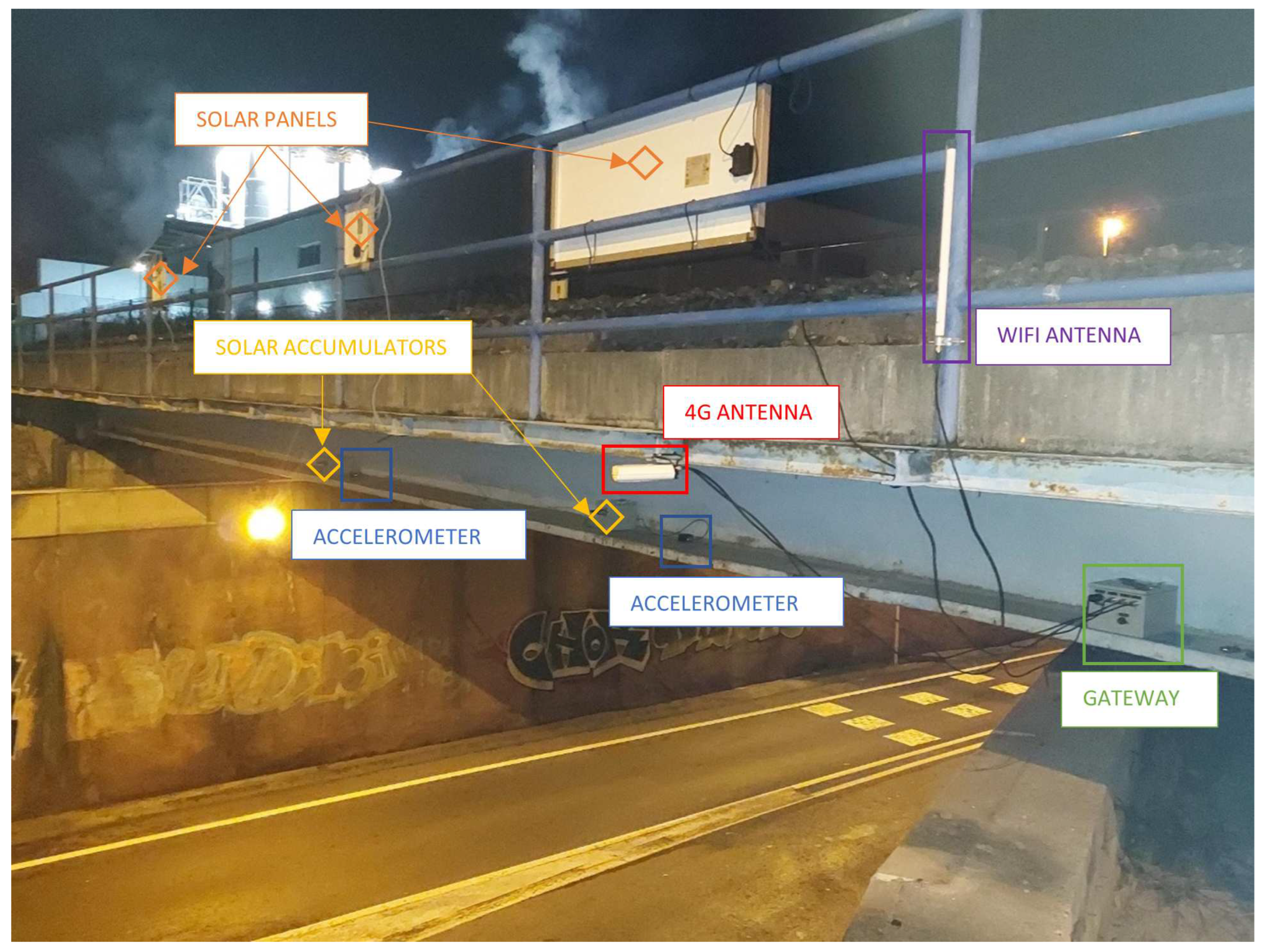
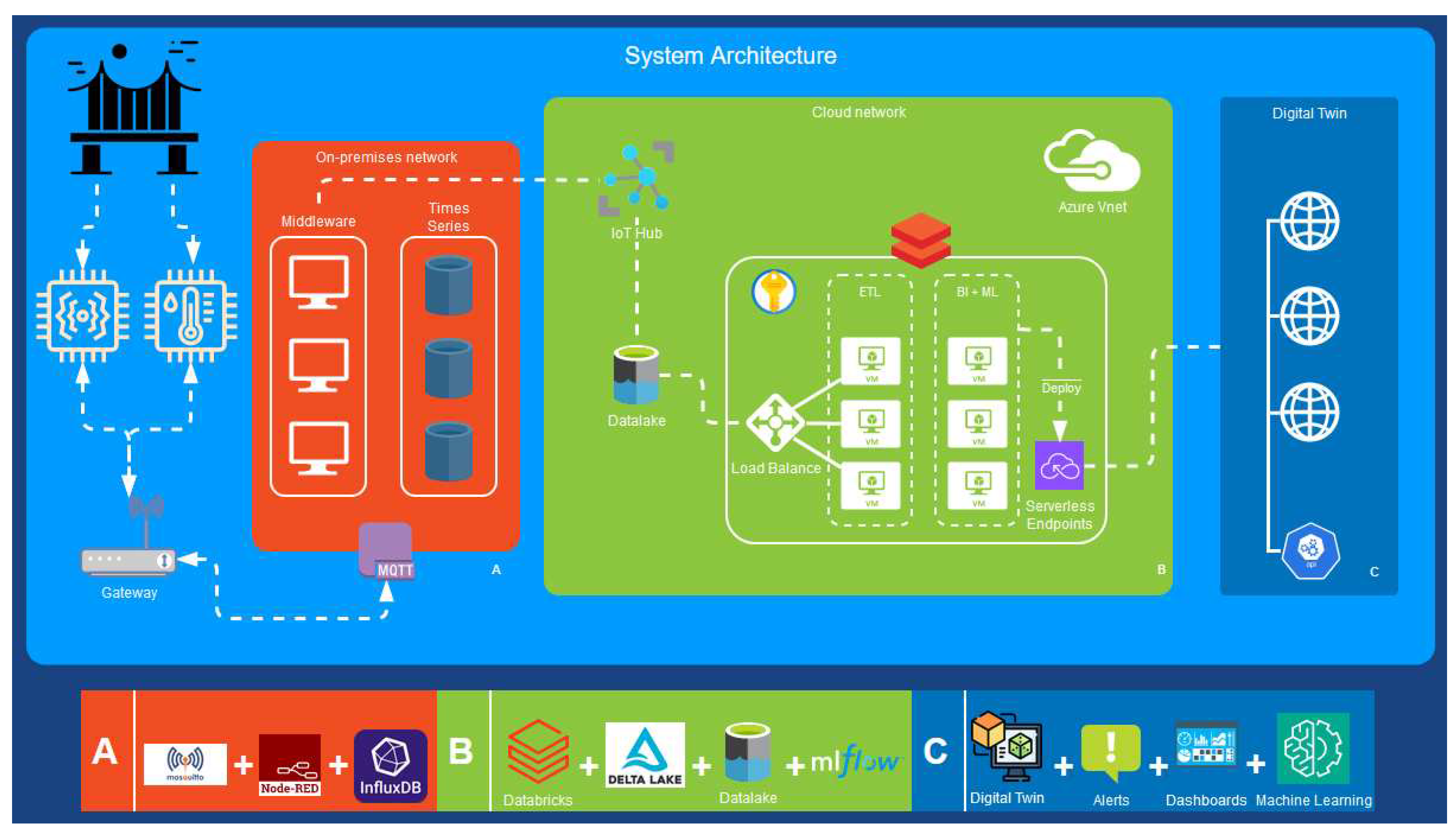
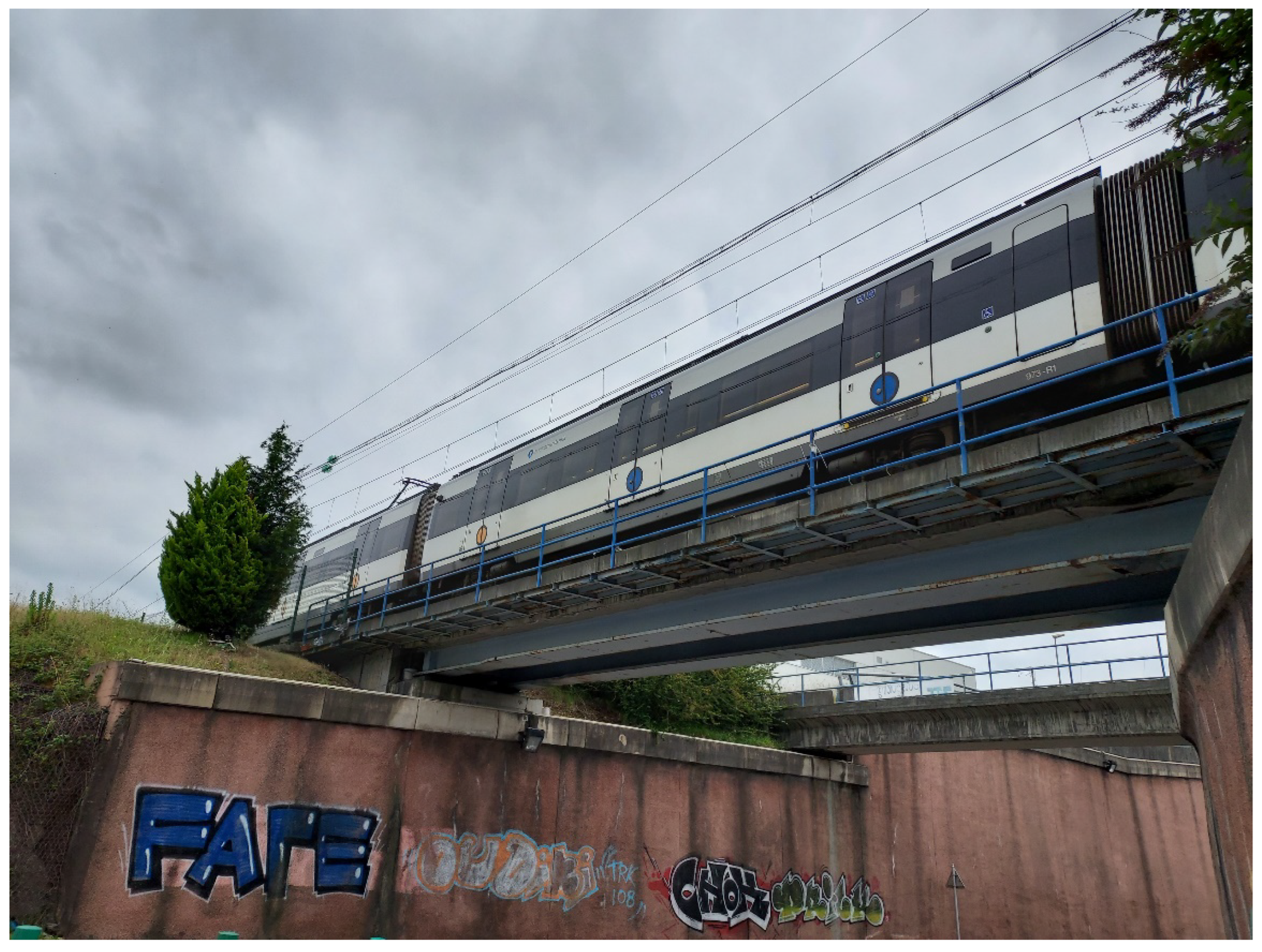
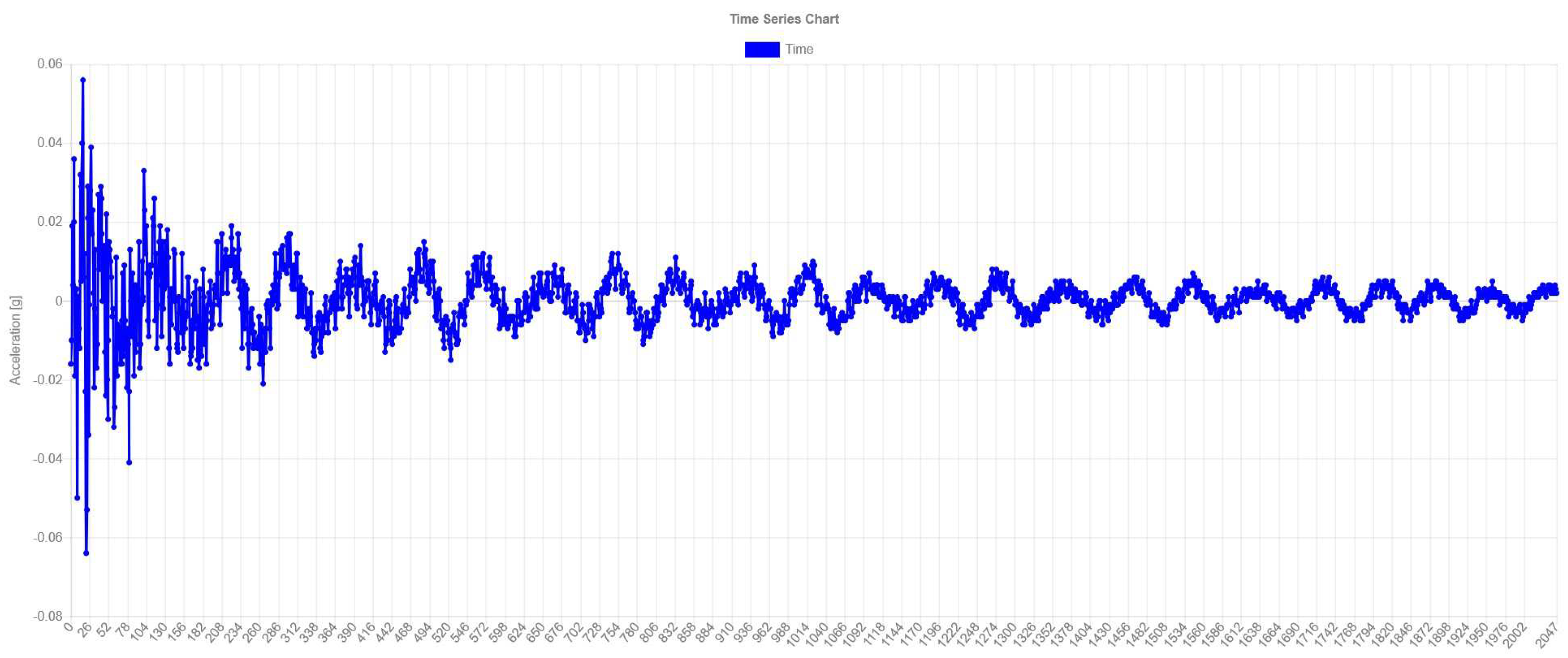
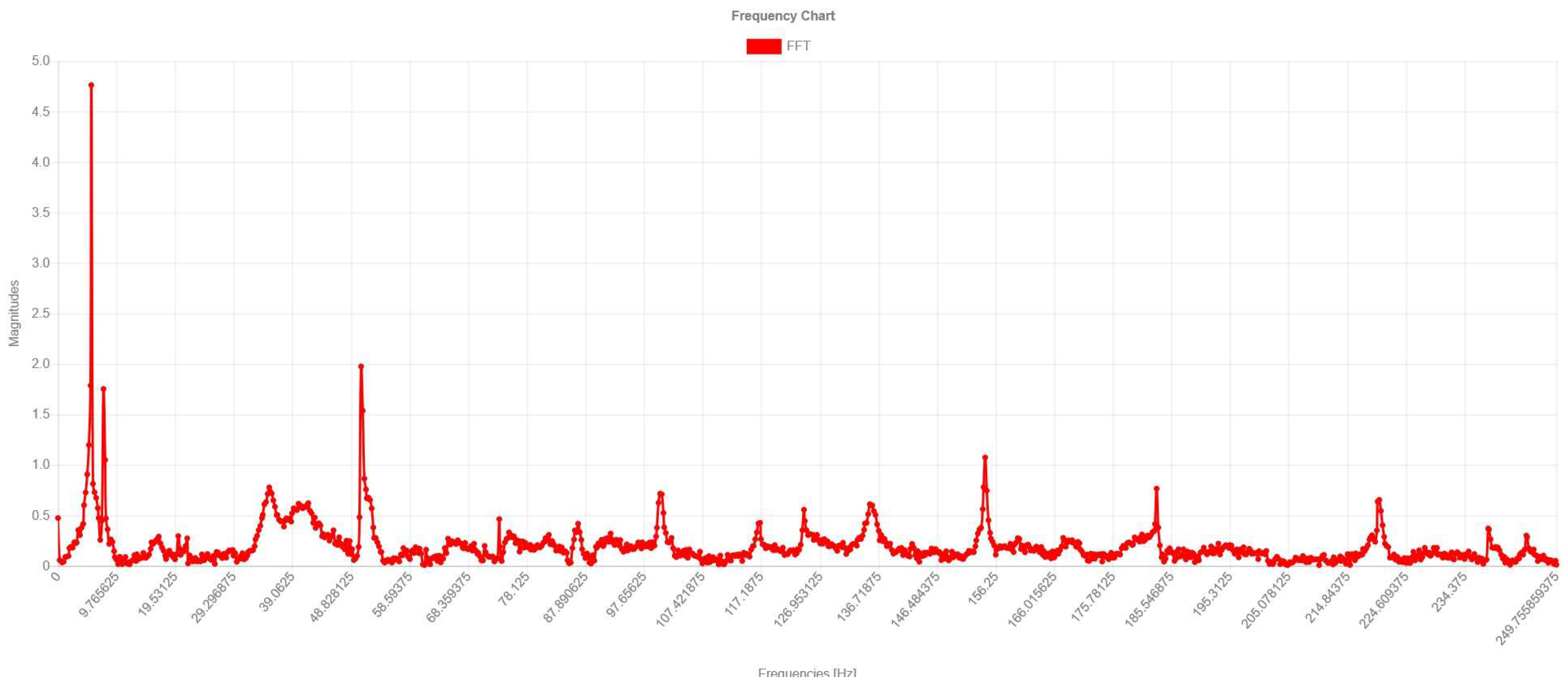
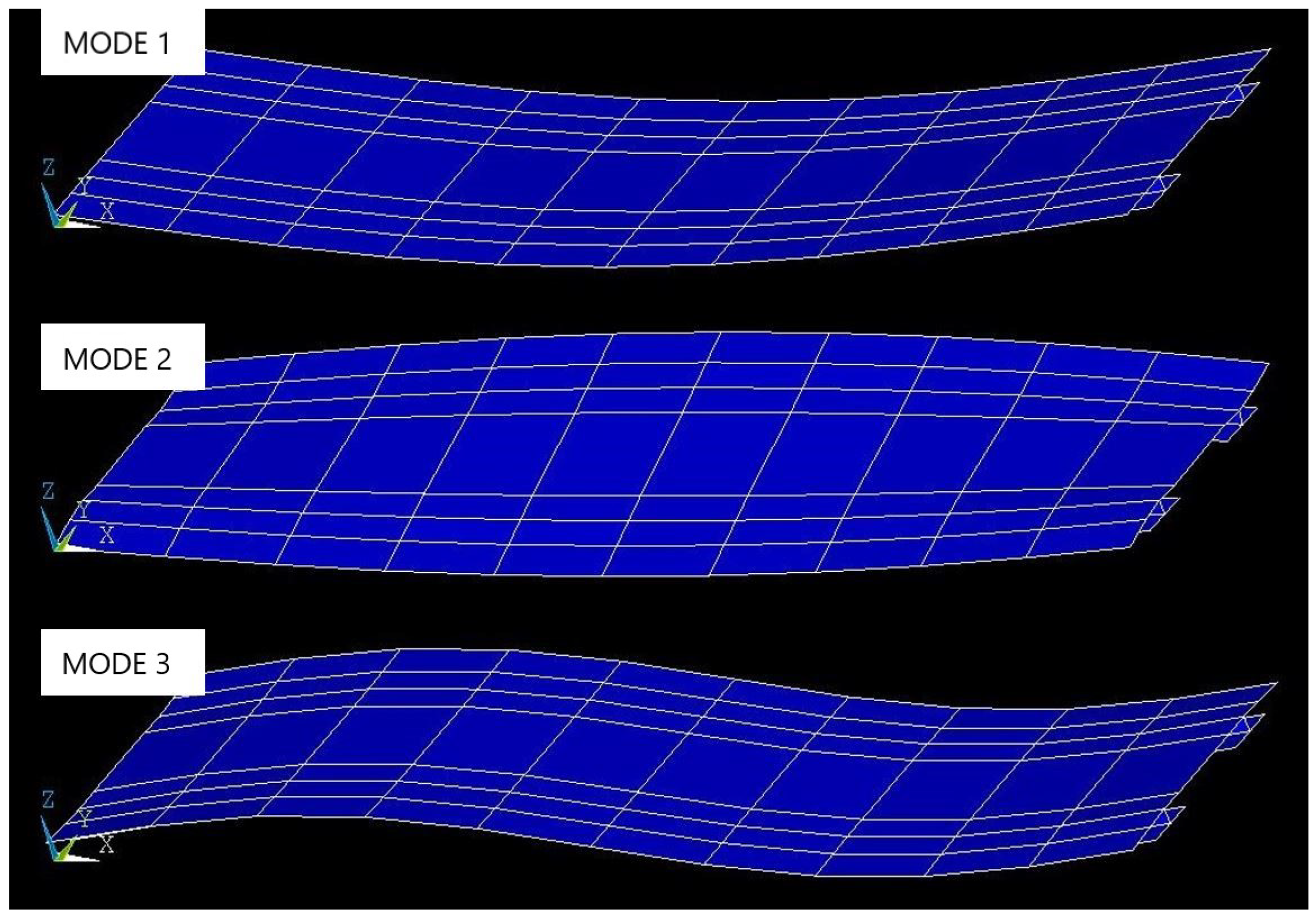
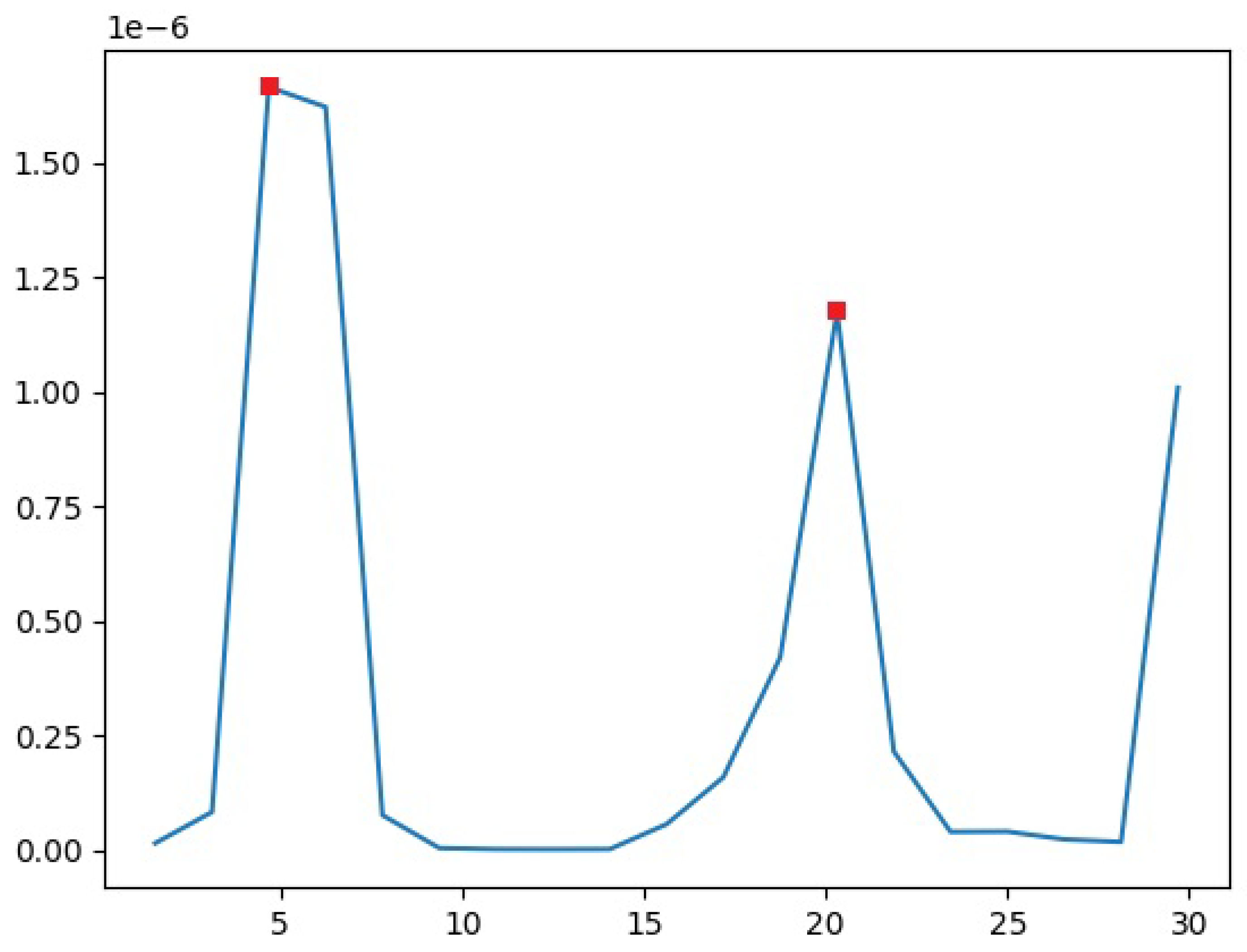
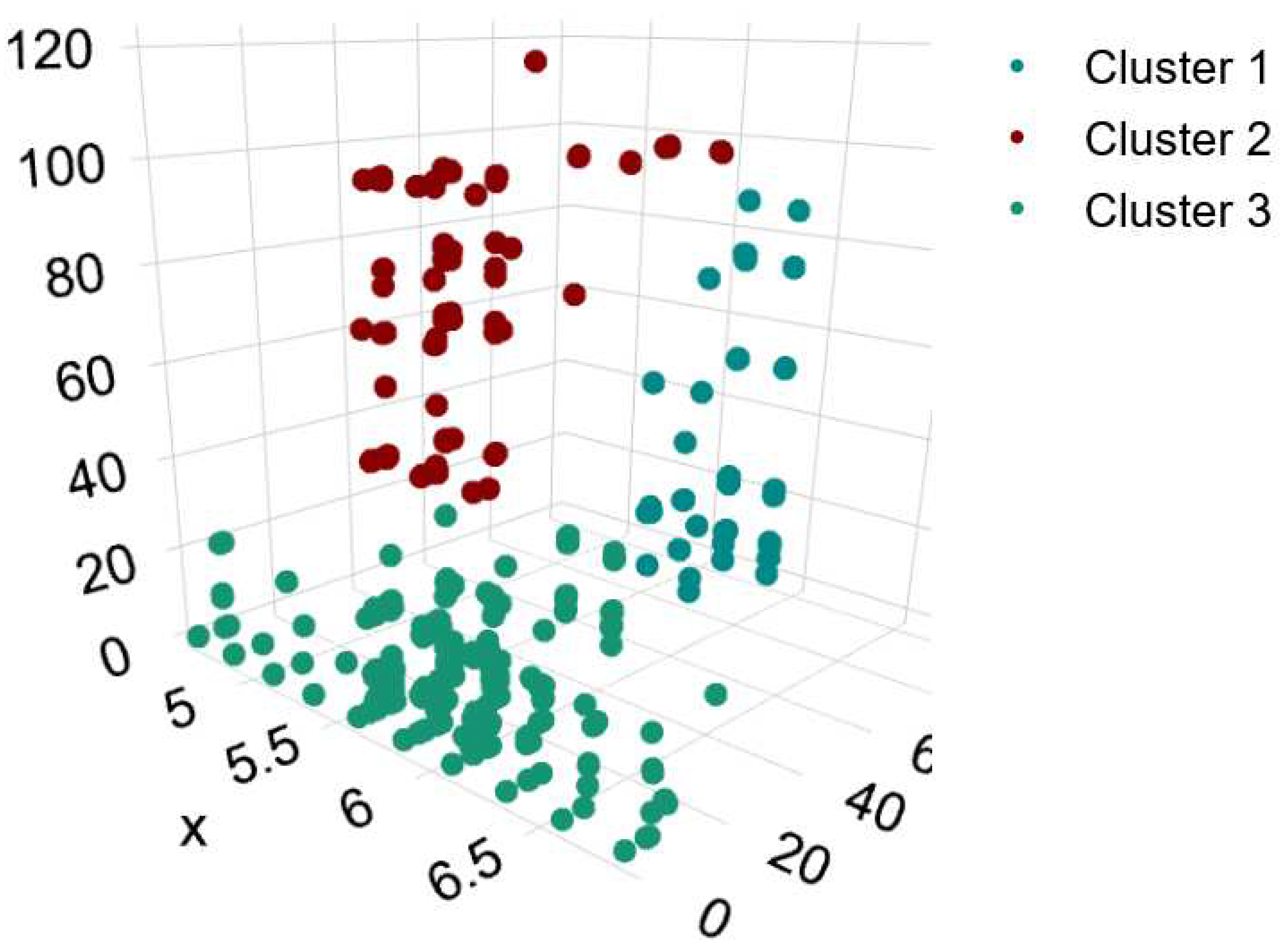
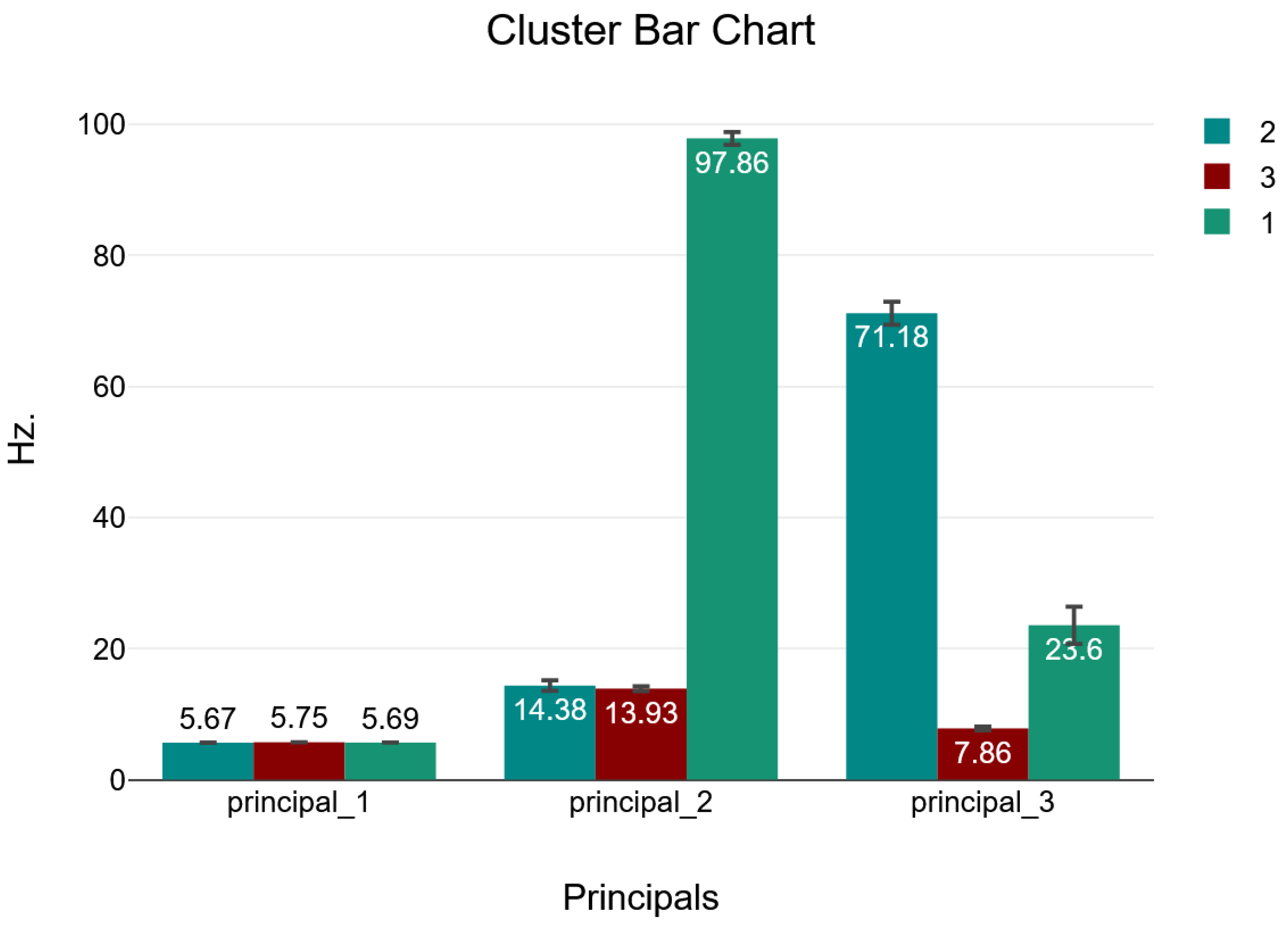
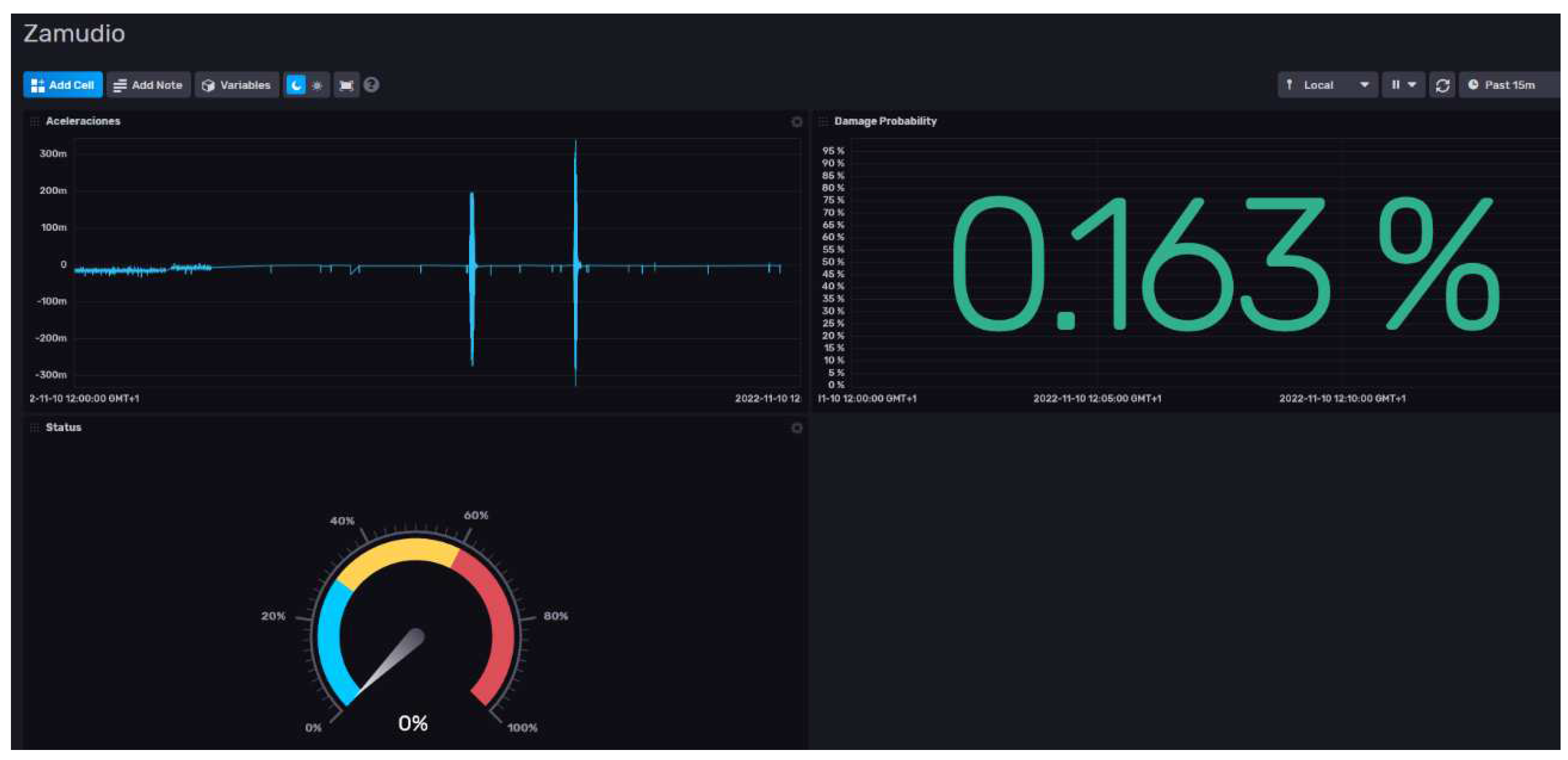
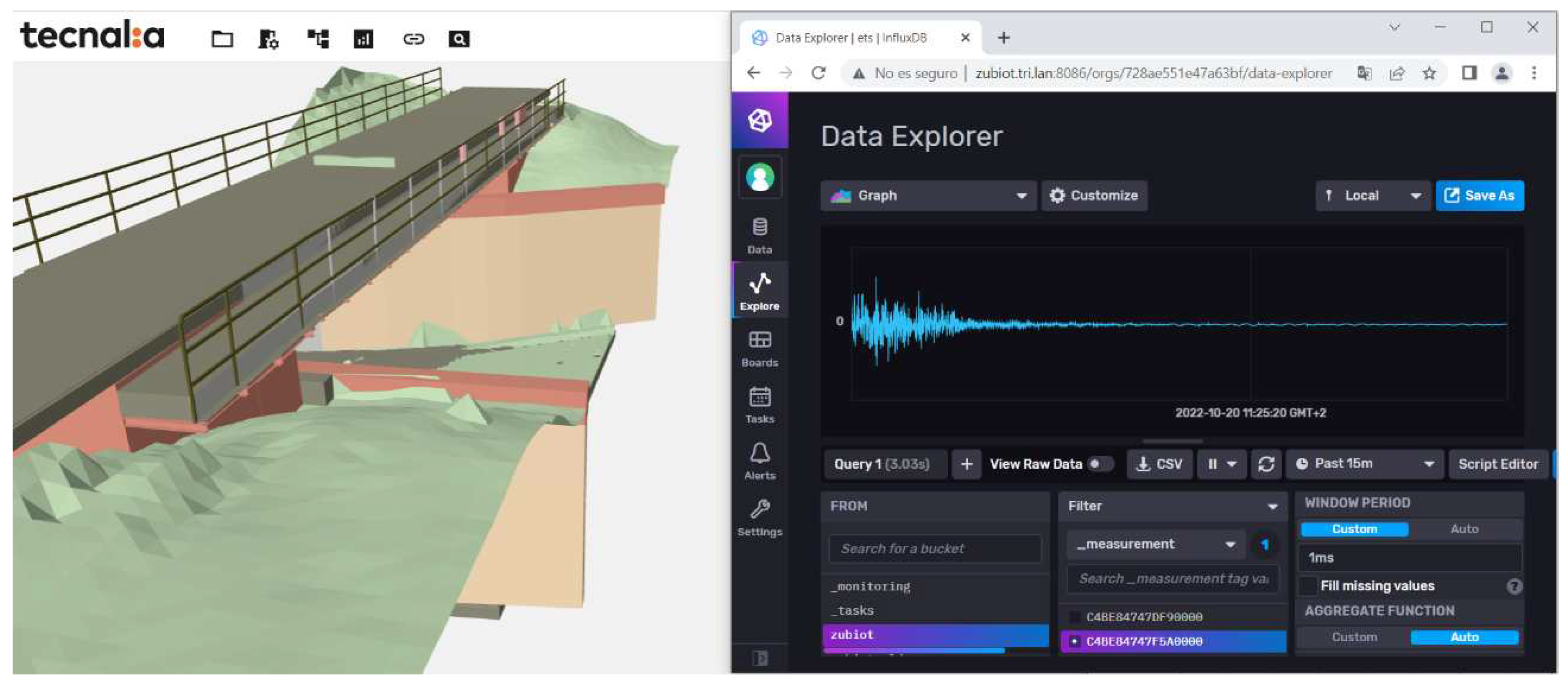
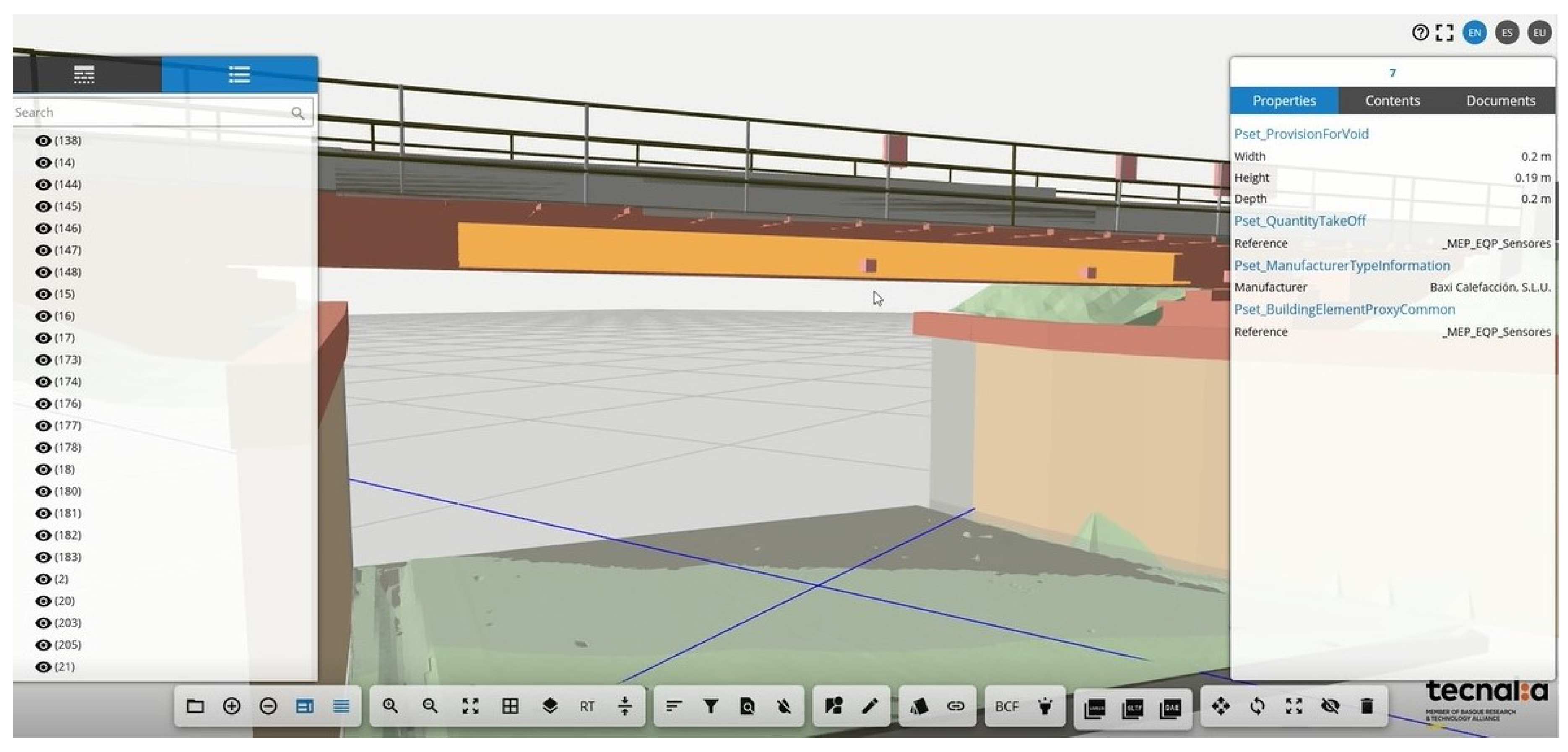
| principal_1 | principal_2 | principal_3 | |
|---|---|---|---|
| Mean | 5.73 | 17.62 | 18.2 |
| Median | 5.62 | 20.02 | 7.57 |
| Std. Deviation | 0.17 | 20.26 | 25.84 |
| Minimum | 4.64 | 0 | 0 |
| Maximum | 6.84 | 100.83 | 119.87 |
| Range | 2.20 | 100.83 | 119.87 |
| Cluster | principal_1 | principal_2 | principal_3 | Cases |
|---|---|---|---|---|
| 1 | 5.69 | 97.86 | 23.6 | 190 |
| 2 | 5.68 | 14.39 | 71.21 | 659 |
| 3 | 5.75 | 13.84 | 7.85 | 3474 |
| Cluster | Mean | Std. Deviation | Minimum | Maximum | |
|---|---|---|---|---|---|
| principal_1 | 3 | 5.75 | 0.18 | 4.64 | 6.84 |
| 2 | 5.67 | 0.11 | 5.62 | 6.35 | |
| 1 | 5.69 | 0.11 | 5.62 | 5.86 | |
| principal_2 | 3 | 13.93 | 11.17 | 0 | 102.83 |
| 2 | 14.38 | 10.64 | 3.17 | 74.95 | |
| 1 | 97.86 | 6.86 | 73.49 | 100.83 | |
| principal_3 | 3 | 7.86 | 8.11 | 0 | 35.4 |
| 2 | 71.18 | 23.11 | 50.29 | 119.87 | |
| 1 | 23.6 | 19.99 | 0 | 86.67 |
Disclaimer/Publisher’s Note: The statements, opinions and data contained in all publications are solely those of the individual author(s) and contributor(s) and not of MDPI and/or the editor(s). MDPI and/or the editor(s) disclaim responsibility for any injury to people or property resulting from any ideas, methods, instructions or products referred to in the content. |
© 2024 by the authors. Licensee MDPI, Basel, Switzerland. This article is an open access article distributed under the terms and conditions of the Creative Commons Attribution (CC BY) license (http://creativecommons.org/licenses/by/4.0/).





